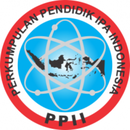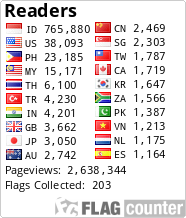The Effect of Using Contextual STEAM-Based Electricity KIT in Improving Junior High School Students' Problem-Solving Ability on Dynamic Electricity Material
DOI:
https://doi.org/10.21831/jser.v7i2.58120Keywords:
Problem-solving skills, contextual STEAM-based electrical KITAbstract
The study aimed to investigate the increase in problem-solving abilities of junior high school students after being treated using contextual STEAM-based electrical KIT in the experimental class and conventional learning in the control class. The research used a quasi-experimental non-equivalent control group design with the posttest-only control group design model. The population was class IX students of Muhammadiyah Middle School for the 2022/2023 academic year, with 71 students. The samples were selected using the simple random sampling technique, namely 47 students divided into class IX-1 as the control class and class IX-2 as the experimental class using a contextual STEAM-based electrical KIT. The results showed that the problem-solving ability of the experimental class was higher, namely obtaining an average score of 50.00% with sufficient criteria. Meanwhile, the control class only got an average score of 38.04% with poor criteria. Based on the inferential analysis using SPSS version 25 with a confidence level of 95%, the output of the independent t-test shows a significance of 0.009. It means that there is a significant difference between the problem-solving abilities of students who use contextual STEAM-based electrical KIT compared to students who use conventional learning.Downloads
References
Ambai, U. H. A., Said, I., & Ratman. (2014). Penggunaan KIT IPA Untuk Meningkatkan Hasil Belajar Siswa Pada Konsep Pesawat Sederhana di Kelas V SDN Potil Pololoba Kecamatan Banggai Kabupaten Banggai Kepulauan. Jurnal Kreatif Tadulako Online, 2(3), 78–88. Retrieved from https://www.neliti.com/id/publications/118688/penggunaan-kit-ipa-untuk-meningkatkan-hasil-belajar-siswa-pada-konsep-pesawat-se.
Andriani, E., Indrawati, & Harijanto, A. (2015). Remedi Miskonsepsi Beberapa Konsep Listrik Dinamis Pada Siswa SMA Melalui Simulai Phet Disertai LKS. Jurnal Pendidikan Fisika, 3(4), 362–369. Retrieved from https://repository.unej.ac.id/bitstream/handle/123456789/59895/Evin%20Andriani%20-%20100210102034_1.pdf?sequence=1.
Anwar, S. (2013). Penggunaan Langkah Pemecahan Masalah Polya dalam Menyelesaikan Soal Cerita Pada Materi Perbandingan di Kelas VI MI Al-Ibrohimy Galis Bangkalan. Jurnal Pendidikan Matematika E-Pensa, 1(1), 1–6. Retrieved from https://ejournal.unesa.ac.id/index.php/mathedunesa/article/view/3883.
Dewi, M., Kaniawati, I., & Suwarma, I. R. (2018). Penerapan Pembelajaran Fisika Menggunakan Pendekatan STEM untuk Meningkatkan Kemampuan Memecahkan Masalah Siswa Pada Materi Listrik Dinamis. Prosiding Seminar Nasional Quantum, 381–385. Retrieved from http://seminar.uad.ac.id/index.php/quantum/article/view/287.
Harefa, D., & Laia, H. T. (2021). Media Pembelajaran Audio Video Terhadap Kemampuan Pemecahan Masalah Matematika Siswa. AKSARA: Jurnal Ilmu Pendidikan Nonformal, 7(2), 329–338. Retrieved from https://ejurnal.pps.ung.ac.id/index.php/Aksara/article/view/463.
Kurniawati, I., Raharjo, T. J., & Khumaedi. (2019). Peningkatan Kemampuan Pemecahan Masalah untuk Mempersiapkan Generasi Unggul Menghadapi Tantangan abad 21. Prosiding Seminar Nasional Pascasarjana UNNES, 2(1), 701–702. Retrieved from https://proceeding.unnes.ac.id/index.php/snpasca/article/view/360.
Mu'minah, I. H., & Suryaningsih, Y. (2020). Implementasi STEAM (Science, Technology, Engineering, Arts and Mathematics) Dalam Pembelajaran Abad 21. Jurnal Bio Educatio, 5(1), 65–73. Retrieved from https://www.neliti.com/id/publications/377702/implementasi-steam-science-technology-engineering-art-and-mathematics-dalam-pemb.
Nurfauziah, & Zhanthy, L. S. (2019). Analisis Kemampuan Pemecahan Masalah Matematik Siswa SMP pada Materi Bilangan Bulat. Journal On Education, 1(2), 215–228. Retrieved from https://jonedu.org/index.php/joe/article/view/49.
Rahayu, O., Siburian, M. F., & Suryana, A. (2021). Analisis Kemampuan Pemecahan Masalah IPA Siswa Kelas VII pada Konsep Pencemaran Lingkungan di MTs. Asnawiyah Kab. Bogor. Biological Science and Education Jurnal, 1(1), 15–23. Retrieved from https://journal.lppmunindra.ac.id/index.php/edubiologia/article/view/8080/0.
Schleicher, A. (2018). PISA 2018 Insights and Interpretation. 64. Retrieved from https://www.oecd.org/pisa/PISA%202018%20Insights%20and%20Interpretations%20FINAL%20PDF.pdf.
Setyosari, P. (2013). Metode Penelitian Pendidikan dan Pengembangan. Jakarta: Kencana Prenadamedia Group.
Sugiyono. (2015). Metode Penelitian dan Pengembangan. Bandung: Alfabeta.
Sugiyono. (2019). Metode Penelitian & pengembangan (Research and Development). Bandung: Alfabeta.
Sujarwanto, E., Hidayat, A., & Wartono. (2014). Kemampuan Pemecahan Masalah Fisika pada Modeling Instruction pada Siswa SMA Kelas XI. Jurnal Pendidikan IPA Indonesia, 3(1), 65–78. Retrieved from https://journal.unnes.ac.id/nju/index.php/jpii/article/view/2903.
Sumiantari, N. L. E., Suardana, I. N., & Selamet, K. (2019). Pengaruh Model Problem Based Learning Terhadap Kemampuan Pemecahan Masalah IPA Siswa Kelas VIII SMP. Jurnal Pendidikan Dan Pembelajaran Sains Indonesia, 2(1), 12-22. Retrieved from https://ejournal.undiksha.ac.id/index.php/JPPSI/article/view/17219.
Taufik, M., Sukmadinata, N. S., Abdulhak, I., & Tumbelaka, B. Y. (2010). Desain Model Pembelajaran Untuk Meningkatkan Kemampuan Pemecahan Masalah dalam Pembelajaran IPA (Fisika) Sekolah Menengah Pertama di Kota Bandung BANDUNG. Berkala Fisika, 13(2), 31-44. Retrieved from https://ejournal.undip.ac.id/index.php/berkala_fisika/article/view/3046.
Turdjai. (2016). Pengaruh Pendekatan Pembelajaran terhadap Hasil Belajar Mahasiswa. TRIADIK, 15(2), 17–29. Retrieved from https://doi.org/10.33369/triadik.v15i2.2865.
Downloads
Published
How to Cite
Issue
Section
License
Journal of Science Education Research allows readers to read, download, copy, distribute, print, search, or link to its articles' full texts and allows readers to use them for any other lawful purpose. The journal allows the author(s) to hold the copyright without restrictions. Finally, the journal allows the author(s) to retain publishing rights without restrictions
- Authors are allowed to archive their submitted article in an open access repository
- Authors are allowed to archive the final published article in an open access repository with an acknowledgment of its initial publication in this journal










